They claim, "Not all that sparkles is gold". Similarly, not all sparkles
resemble the same type of gold! There are different colors of gold and can
differ based on a variety of factors, including the metals it contains and the
production process.
In this blog, you will delve into the different colors of gold and how they
might complement your style. Keep reading the blog to discover the perfect
gold hue.
Key Elements
-
Different colors of gold are yellow, white, rose, green, grey, blue, and
purple.
-
Yellow gold is classic and stable, perfect for everyday wear.
-
White gold is modern, durable, and scratch-resistant.
-
Rose gold offers a romantic, vintage feel, ideal for rings and bracelets.
-
Green, grey, blue, and purple gold are unique, and often used in
distinctive jewelry.
The best gold color depends on your fashion taste, skin tone, and
jewelry type.
Most Popular Colors of Gold
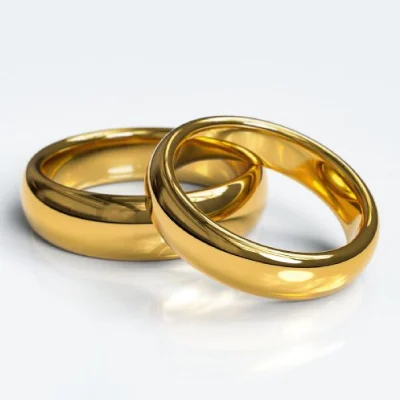
- Yellow Gold
Since yellow is the color of gold by nature, the image of gold that
first springs to mind when we talk about it is known as yellow gold.
Combining zinc, copper, and silver produces this vivid yellow color. It
is strengthened and given a shine by the addition of various metals,
making it suitable for use as a jewelry design course. Because it has
grown less reactive due to the combination of various materials, making
it stable, it requires the least amount of upkeep. The world's most
popular shade of gold is this one.
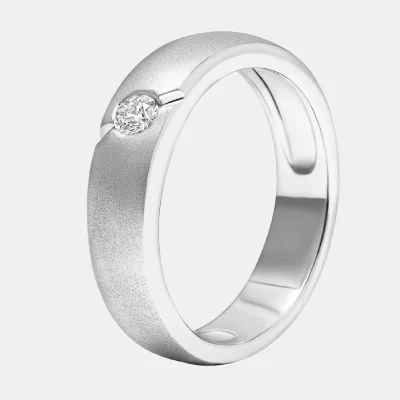
- White Gold
Although gold is naturally yellow, people often combine it with silver
or platinum to make something far more expensive. If someone wants the
white color but isn't willing to spend a lot of money, gold combined
with nickel, zinc, and cadmium will work just fine.
People frequently purchase gold in its white form because white gold has
several advantages over yellow gold. It is far more resilient and
scratch-resistant and is slightly less expensive when combined with
zinc, cadmium, and nickel.
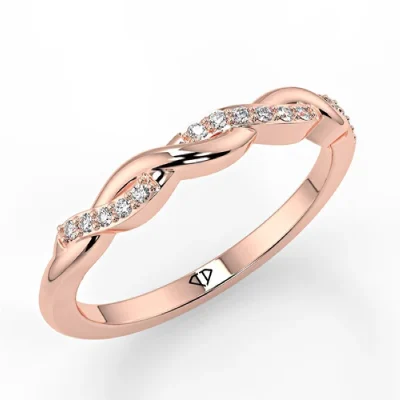
- Rose Gold
Rose gold, often called red gold, is a type of gold that has a pinkish
hue due to its alloy with silver, copper, and gold. Usually, 18K rose
gold contains 75% pure gold, 22.25% copper, and 2.75% silver. The
label's red, rose, and pink gold are commonly used interchangeably
because the only thing separating them is the percentage of copper.
Crown gold is the highest karat variation of rose gold, which is 22
karat. The higher copper content in rose gold makes it more resilient
than yellow or white gold. Additionally, rose gold jewelry is more
well-liked due to its resilience and blush, and is frequently used for
bracelets,
engagement rings, and other jewelry pieces.
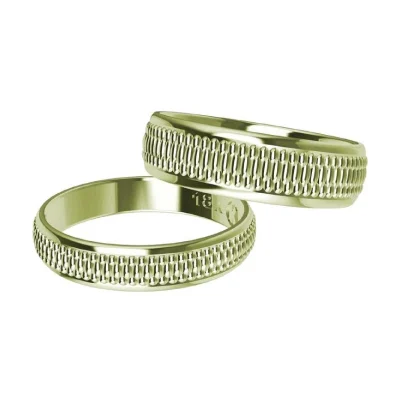
- Green Gold
Electrum, also called green gold, is a naturally occurring alloy of
gold, silver, and sometimes copper. Rather than seeming green, silver
gives the gold alloy a greenish-yellow hue. Even though cadmium is
extremely toxic and may be harmful to health, it is not frequently
employed to create a green color in gold alloys. A dark green alloy is
created by combining 75% gold, 15% silver, 6% copper, and 4% cadmium.
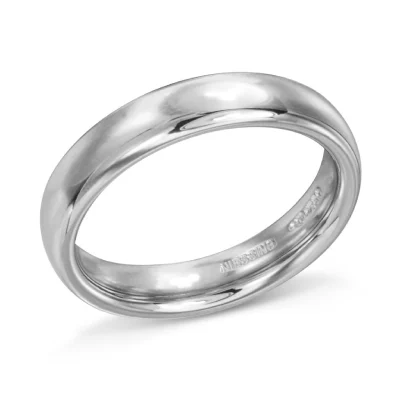
- Grey Gold
Grey gold typically comes in 18 carats and is created by mixing gold
with palladium. It is possible to create the item at a lower cost
without using palladium by combining copper, manganese, and silver with
gold in precise ratios.
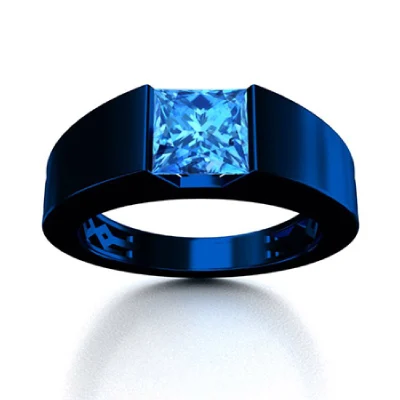
- Blue Gold
Now, most people would assume that we’re making this up, but the
majority of people are currently unaware of blue gold because it is
still a relatively new phenomenon that hasn't caught on. Blue gold is
the term used for an alloy that contains gold and either gallium or
indium. This mixture is affordable because of its around 11k purity, yet
it is also reasonably durable despite not being as pure as one would
prefer.
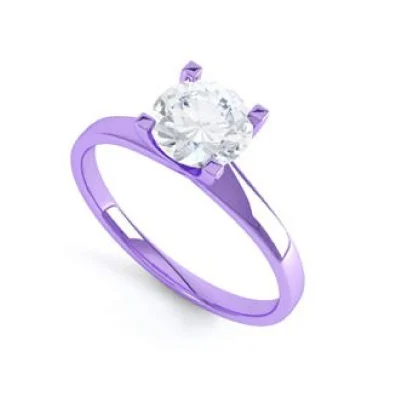
- Purple Gold
This alloy, which consists of two metals—gold and aluminum—is extremely
uncommon to be used in jewelry since the addition of aluminum to gold
makes the gold fragile and might shatter into fragments in the event of
a hit or contact, making it undesirable to nearly everyone. Other names
for it include violet gold and amethyst gold.
Choosing the Perfect Color of Gold
The ideal gold hue can enhance the beauty of jewelry. Different colors of gold
include: yellow, white, and rose—all of which have certain characteristics
that complement various stones and metals.
Yellow gold—warm and classic—is what makes most gemstones, especially the rich
shades of rubies and emeralds, stand out, accenting them with elegance. White
gold is sleek, modern, and often preferred for making diamonds and
cooler-toned stones glitter with a very modernized flair. Rose gold takes on a
pinkish tint and gives a soft, vintage feel when matched with pearls or any
pastel-colored gem.
What’s the Best Shade of Gold?
While picking the best shade of gold, from different colors of gold, "best"
certainly is subjective. Your taste, skin tone and kind of jewelry will all
play an important role. So for everyday wear, what you'll want is something
more practical—white gold that is resistant to scratching, and braids
effortlessly with so many diverse ensembles.
For special occasions, it's yellow or rose gold for its feel that exudes
luxury and captures the eye. Ultimately, the most appropriate shade of gold is
the one that suits your taste and serves the use of the jewelry.
Conclusion
In conclusion, gold comes in a variety of stunning colors, each with its
unique appeal and charm. If you favor the classic beauty of yellow gold, the
contemporary elegance of white gold, or the sentimental allure of rose gold;
there is a hue to complement every personal style and event. The best color
of gold for you depends on your personal taste, how you plan to wear the
jewelry, and the gemstones you wish to pair it with.
BOLD understands the value of different hues and their qualities for your
style and offers you a wide range of different colors of gold jewelry. So
you can choose the perfect gold color to enhance your jewelry collection and
reflect your style.
They claim, "Not all that sparkles is gold". Similarly, not all sparkles
resemble the same type of gold! There are different colors of gold and can
differ based on a variety of factors, including the metals it contains and the
production process.
In this blog, you will delve into the different colors of gold and how they
might complement your style. Keep reading the blog to discover the perfect
gold hue.
Key Elements
-
Different colors of gold are yellow, white, rose, green, grey, blue, and
purple.
-
Yellow gold is classic and stable, perfect for everyday wear.
-
White gold is modern, durable, and scratch-resistant.
-
Rose gold offers a romantic, vintage feel, ideal for rings and bracelets.
-
Green, grey, blue, and purple gold are unique, and often used in
distinctive jewelry.
The best gold color depends on your fashion taste, skin tone, and
jewelry type.
Most Popular Colors of Gold

- Yellow Gold
Since yellow is the color of gold by nature, the image of gold that
first springs to mind when we talk about it is known as yellow gold.
Combining zinc, copper, and silver produces this vivid yellow color. It
is strengthened and given a shine by the addition of various metals,
making it suitable for use as a jewelry design course. Because it has
grown less reactive due to the combination of various materials, making
it stable, it requires the least amount of upkeep. The world's most
popular shade of gold is this one.

- White Gold
Although gold is naturally yellow, people often combine it with silver
or platinum to make something far more expensive. If someone wants the
white color but isn't willing to spend a lot of money, gold combined
with nickel, zinc, and cadmium will work just fine.
People frequently purchase gold in its white form because white gold has
several advantages over yellow gold. It is far more resilient and
scratch-resistant and is slightly less expensive when combined with
zinc, cadmium, and nickel.

- Rose Gold
Rose gold, often called red gold, is a type of gold that has a pinkish
hue due to its alloy with silver, copper, and gold. Usually, 18K rose
gold contains 75% pure gold, 22.25% copper, and 2.75% silver. The
label's red, rose, and pink gold are commonly used interchangeably
because the only thing separating them is the percentage of copper.
Crown gold is the highest karat variation of rose gold, which is 22
karat. The higher copper content in rose gold makes it more resilient
than yellow or white gold. Additionally, rose gold jewelry is more
well-liked due to its resilience and blush, and is frequently used for
bracelets,
engagement rings, and other jewelry pieces.

- Green Gold
Electrum, also called green gold, is a naturally occurring alloy of
gold, silver, and sometimes copper. Rather than seeming green, silver
gives the gold alloy a greenish-yellow hue. Even though cadmium is
extremely toxic and may be harmful to health, it is not frequently
employed to create a green color in gold alloys. A dark green alloy is
created by combining 75% gold, 15% silver, 6% copper, and 4% cadmium.

- Grey Gold
Grey gold typically comes in 18 carats and is created by mixing gold
with palladium. It is possible to create the item at a lower cost
without using palladium by combining copper, manganese, and silver with
gold in precise ratios.

- Blue Gold
Now, most people would assume that we’re making this up, but the
majority of people are currently unaware of blue gold because it is
still a relatively new phenomenon that hasn't caught on. Blue gold is
the term used for an alloy that contains gold and either gallium or
indium. This mixture is affordable because of its around 11k purity, yet
it is also reasonably durable despite not being as pure as one would
prefer.

- Purple Gold
This alloy, which consists of two metals—gold and aluminum—is extremely
uncommon to be used in jewelry since the addition of aluminum to gold
makes the gold fragile and might shatter into fragments in the event of
a hit or contact, making it undesirable to nearly everyone. Other names
for it include violet gold and amethyst gold.
Choosing the Perfect Color of Gold
The ideal gold hue can enhance the beauty of jewelry. Different colors of gold
include: yellow, white, and rose—all of which have certain characteristics
that complement various stones and metals.
Yellow gold—warm and classic—is what makes most gemstones, especially the rich
shades of rubies and emeralds, stand out, accenting them with elegance. White
gold is sleek, modern, and often preferred for making diamonds and
cooler-toned stones glitter with a very modernized flair. Rose gold takes on a
pinkish tint and gives a soft, vintage feel when matched with pearls or any
pastel-colored gem.
What’s the Best Shade of Gold?
While picking the best shade of gold, from different colors of gold, "best"
certainly is subjective. Your taste, skin tone and kind of jewelry will all
play an important role. So for everyday wear, what you'll want is something
more practical—white gold that is resistant to scratching, and braids
effortlessly with so many diverse ensembles.
For special occasions, it's yellow or rose gold for its feel that exudes
luxury and captures the eye. Ultimately, the most appropriate shade of gold is
the one that suits your taste and serves the use of the jewelry.
Conclusion
In conclusion, gold comes in a variety of stunning colors, each with its
unique appeal and charm. If you favor the classic beauty of yellow gold, the
contemporary elegance of white gold, or the sentimental allure of rose gold;
there is a hue to complement every personal style and event. The best color
of gold for you depends on your personal taste, how you plan to wear the
jewelry, and the gemstones you wish to pair it with.
BOLD understands the value of different hues and their qualities for your
style and offers you a wide range of different colors of gold jewelry. So
you can choose the perfect gold color to enhance your jewelry collection and
reflect your style.







